Growth Management
October 27th, 2015
Overview
*Growth Management
*Smart Growth
*Techniques & Policies
Growth Management is a series of policies, plans, investments, incentives, and regulations that guide the:
- Type
- Amount
- Location
- Timing
- Cost of Development
It aims to balance economy, equity, and environment to achieve more sustainable outcomes. And it address who will provide and pay for new services and facilities.
Era of Growth Control ('50 to '75)
View growth as problem to be addressed by strict regulations.
Basic approach: strict limits on amount of growth, boundaries delineating preferred locations
Era of Comprehensive Planning (75' to '00)
View growth as cost to be accounted for through comp planning and wise use of public resources.
Basic approach: regulation of development, comprehensive planning, infrastructure planning
Era of Smart Growth (1999 to early 2010s)
View growth as opportunity for achieving desirable development outcomes.
Basic approach: incentives and public infrastructure investments
Era of Sustainable Growth (emerging)
View growth as opportunity for supporting economy, promoting sustainability, and addressing past errors.
Basic approach: combo of incentives and regulations to promote balanced growth appropriate to different locations
The goal is smart growth, evolved.
Smart growth helps communities grow in ways that expand economic opportunity while protecting human health and the environment.
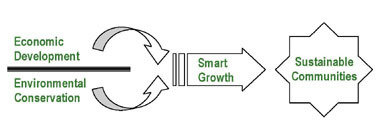
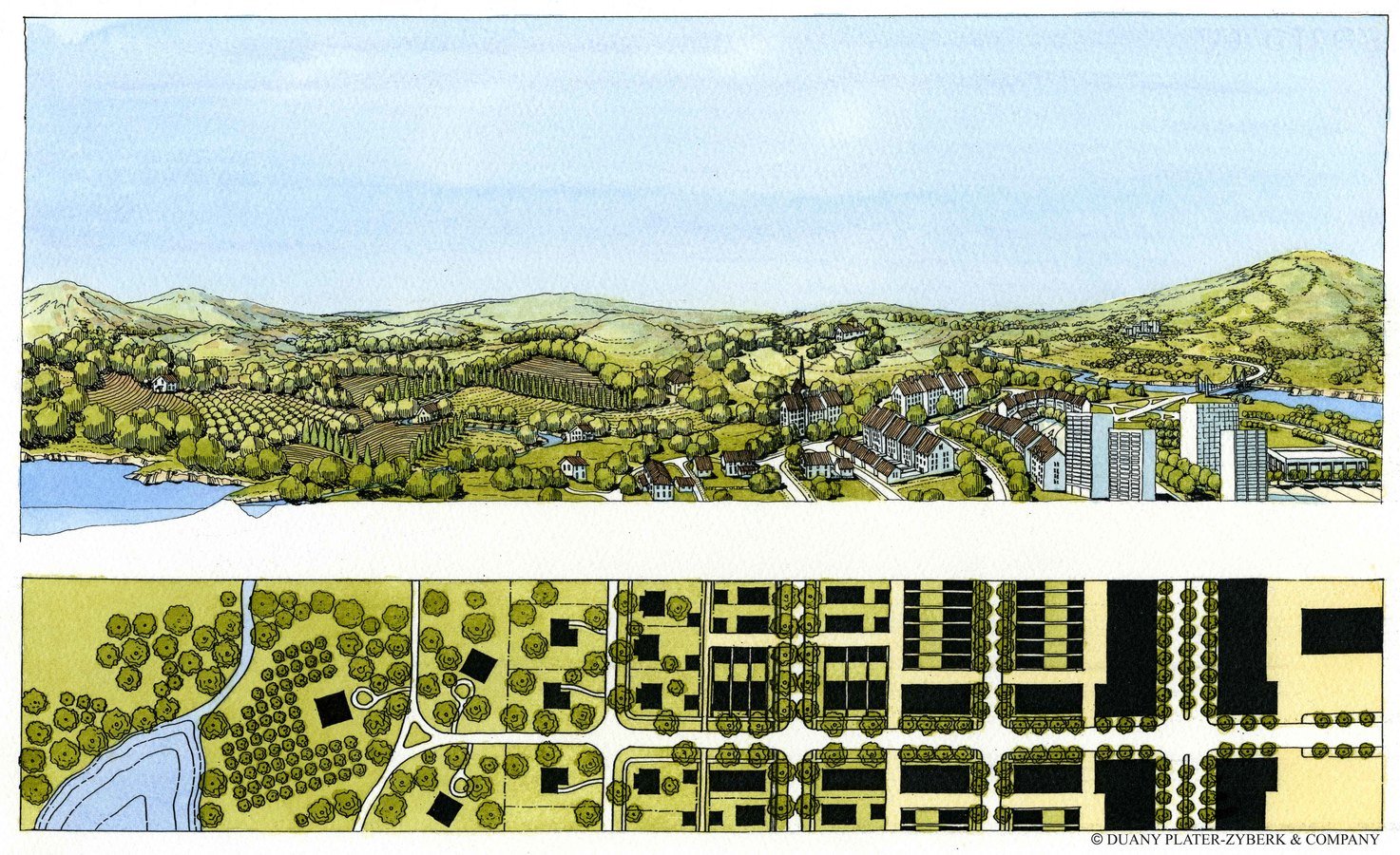
Source: https://freeassociationdesign.files.wordpress.com/2009/12/nat_and_rural_urb_hi.jpg


The goal is managed choice.
Inclusion over exclusion. Flexibility over rigidity.
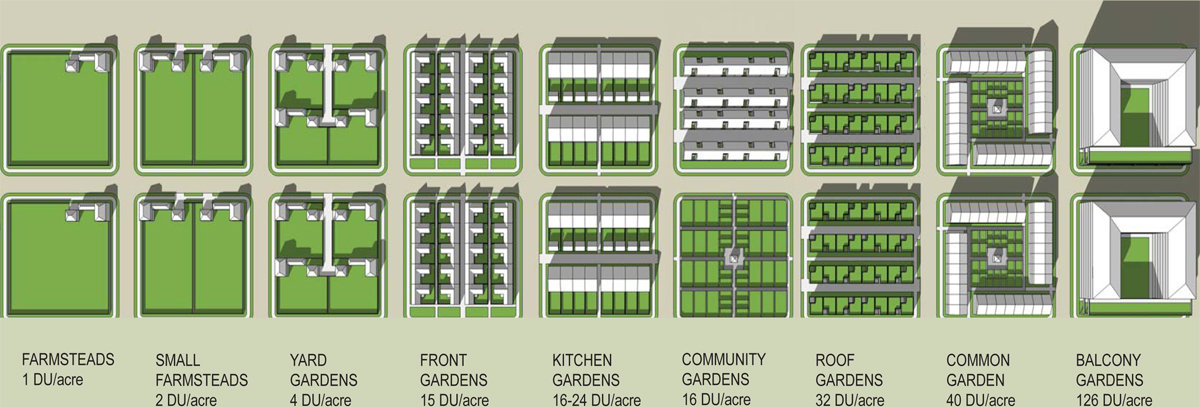
Source: http://www.dpz.com/Initiatives/AgrarianUrbanism

Instead of building here
Let's build here.
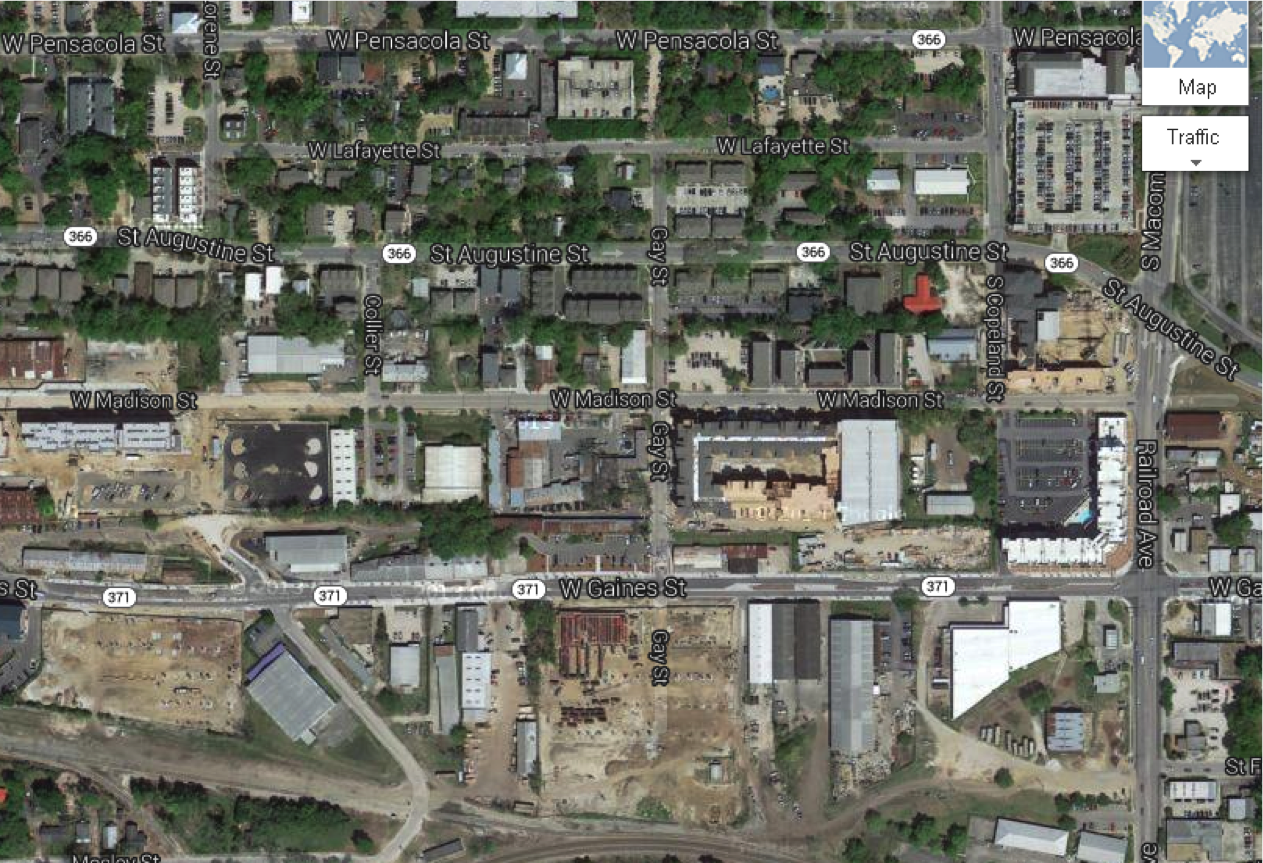
Growth Management Tools
- Planning - the technical, political, and policy framework for growth management implementation
- Regulatory - mandatory controls on type, location, and timing of development
- Nonregulatory - land acquisition, tax policies, and using infrastructure to guide development
The most effective growth management programs use a combination of all three tools.
Planning Tools
The principle planning tool has been zoning, which is set forth in a comprehensive plan.
Comprehensive Plan: a vision for the future of the community
- Developed and accepted through public participation
- Adopted by public elected officials
- Comprised of goals, objectives, and policies across variety of urban development categories
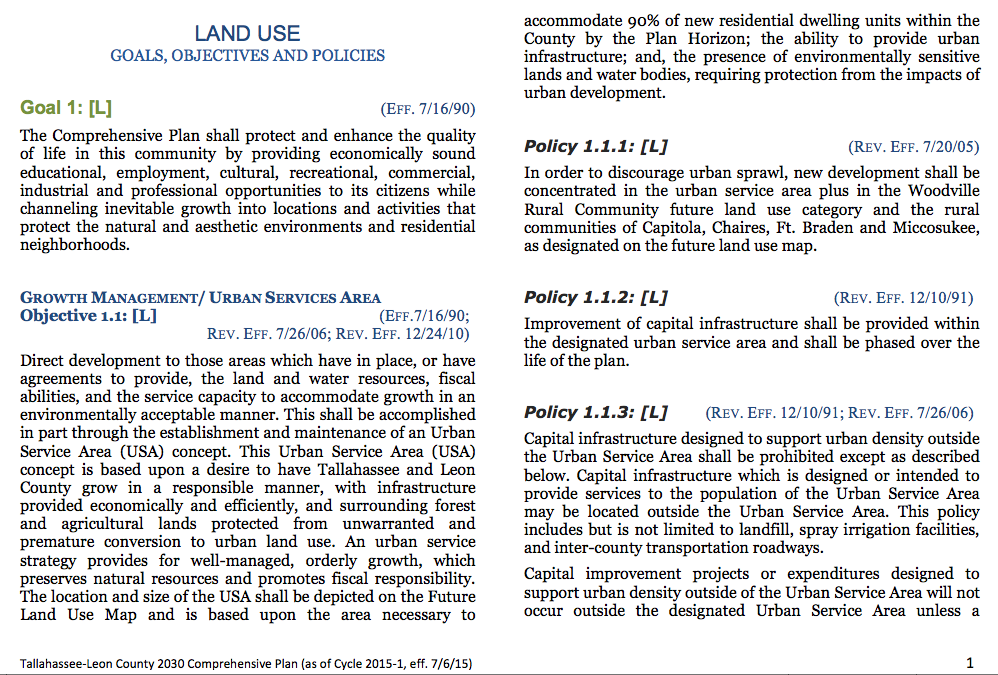
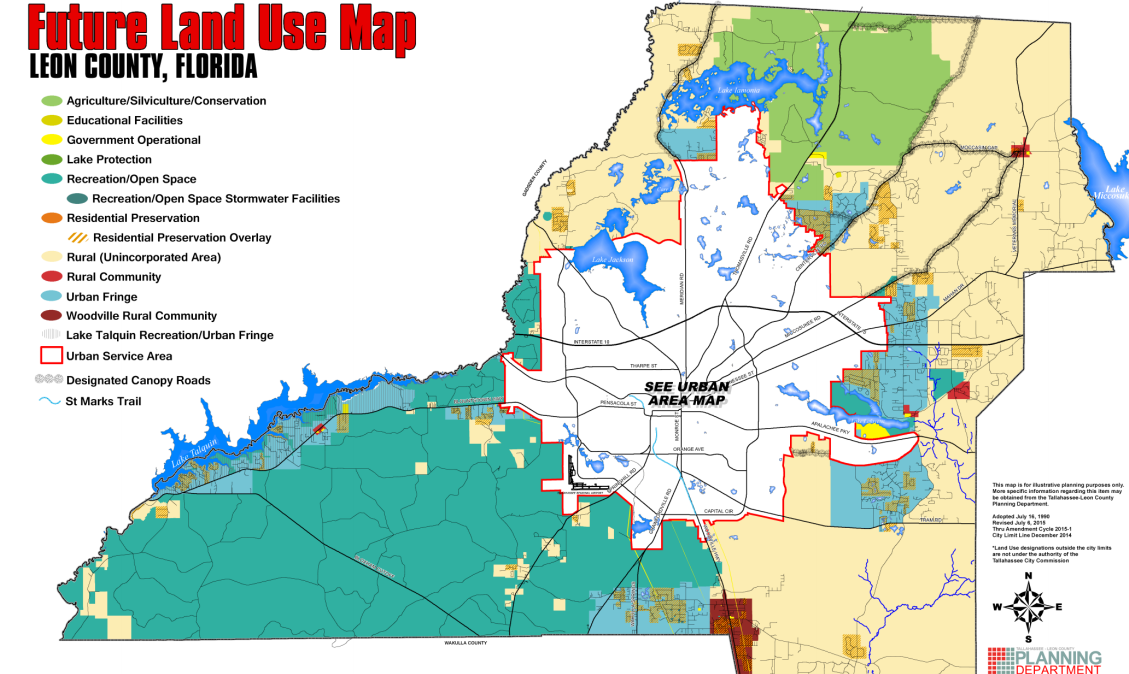
More info: https://www.talgov.com/Uploads/Public/Documents/planning/pdf/compln/thecompplan/lus.pdf
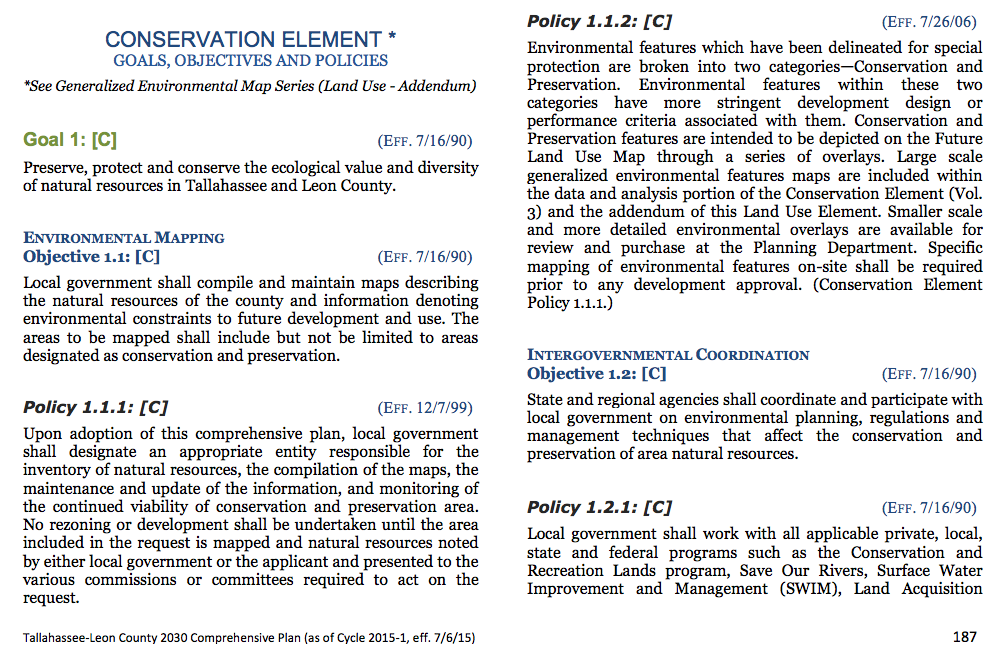
Regulatory Tools
-
Land use regulation is the principal mechanism local government uses to manage growth.
-
Conventional zoning specifies where land use types can occur (Residential, Commercial, Industrial, Conservation)
-
Zones have different development intensity or density restrictions as well as development parameters or design standards for building size and site characteristics
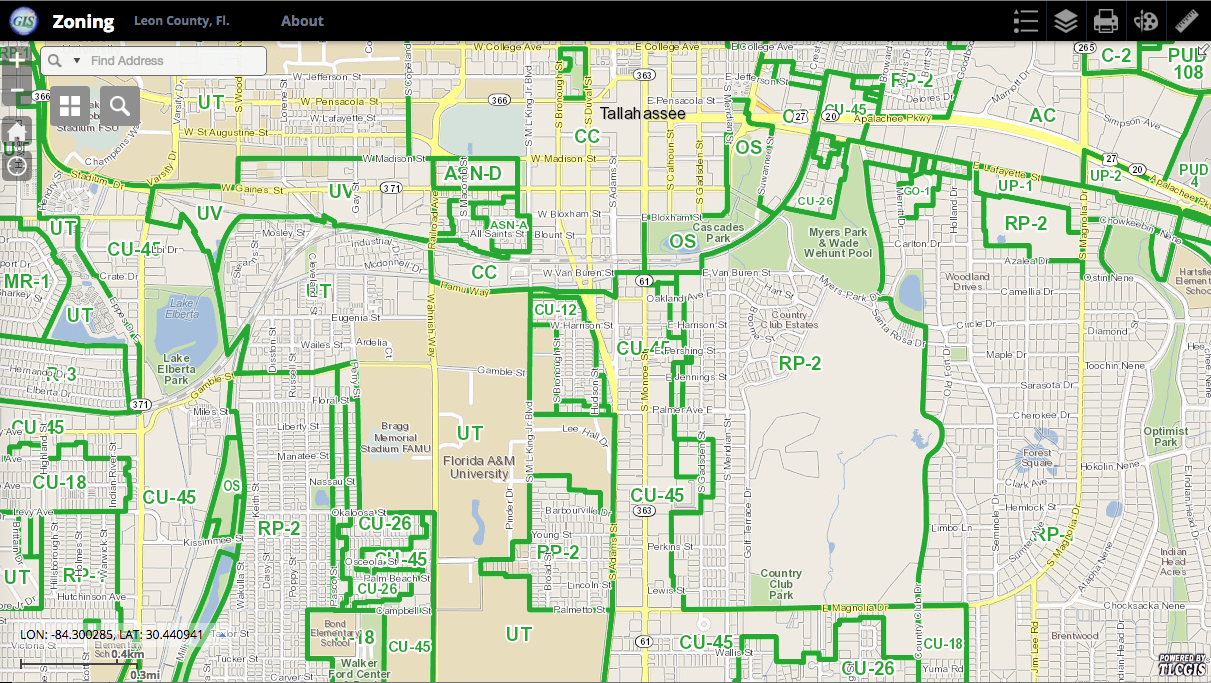
Source: http://tlcgisinter.leoncountyfl.gov/zoning/

Regulatory Tools Cont.
Subdivision Ordinances
Not zoning use, but do set requirements for the layout of streets, drainage, water, wastewater, and infrastructure.

Regulatory Tools Cont.
Urban Growth Boundaries
- Containing development within set boundary separating urban and rural land uses
- Emphasizes development in areas with existing infrastructure and de-emphasizes in undeveloped areas
- Usually intended to accommodate growth for a limited period of time
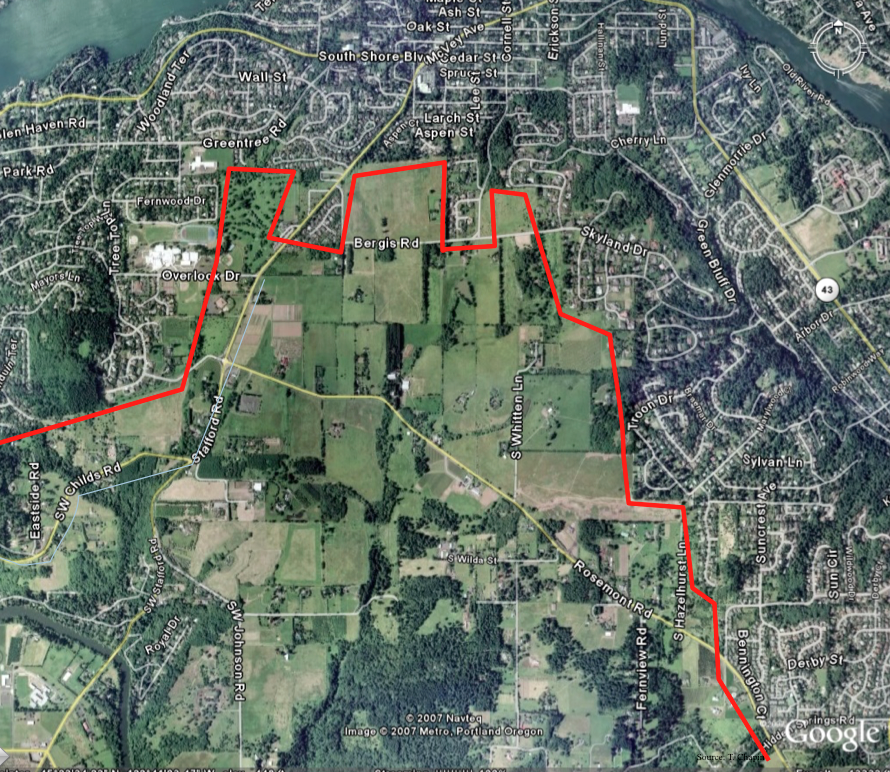
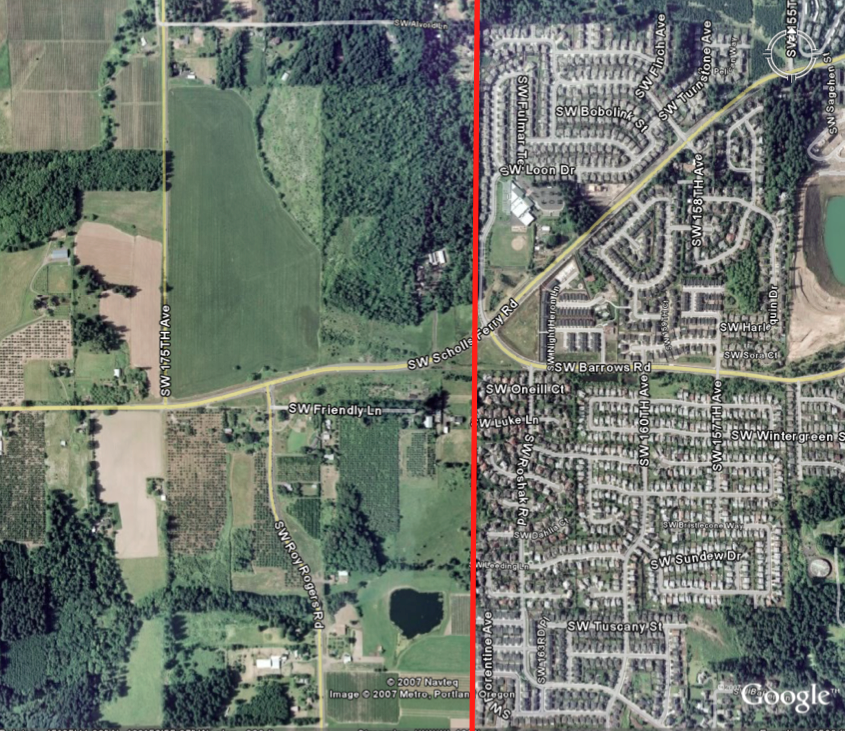
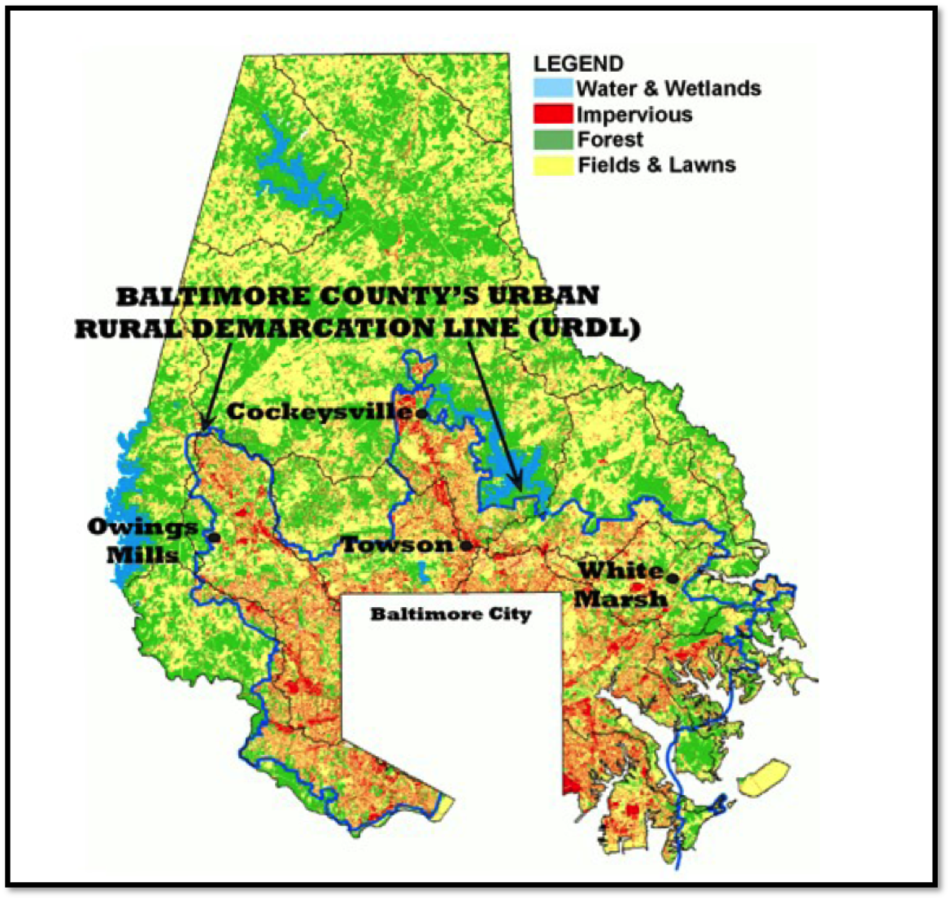

Miami-Dade Urban Development Boundary
Regulatory Tools Cont.
Transfer of Development Rights (TDR)
- Transfers right from areas designated for protection to areas appropriate for development
- Must designate a sending area from which rights are transferred to a receiving area to which rights are applied
- Costs are borne by developers in the receiving area
- Market based mechanism for compensation in one area and bonus development intensity/density in another
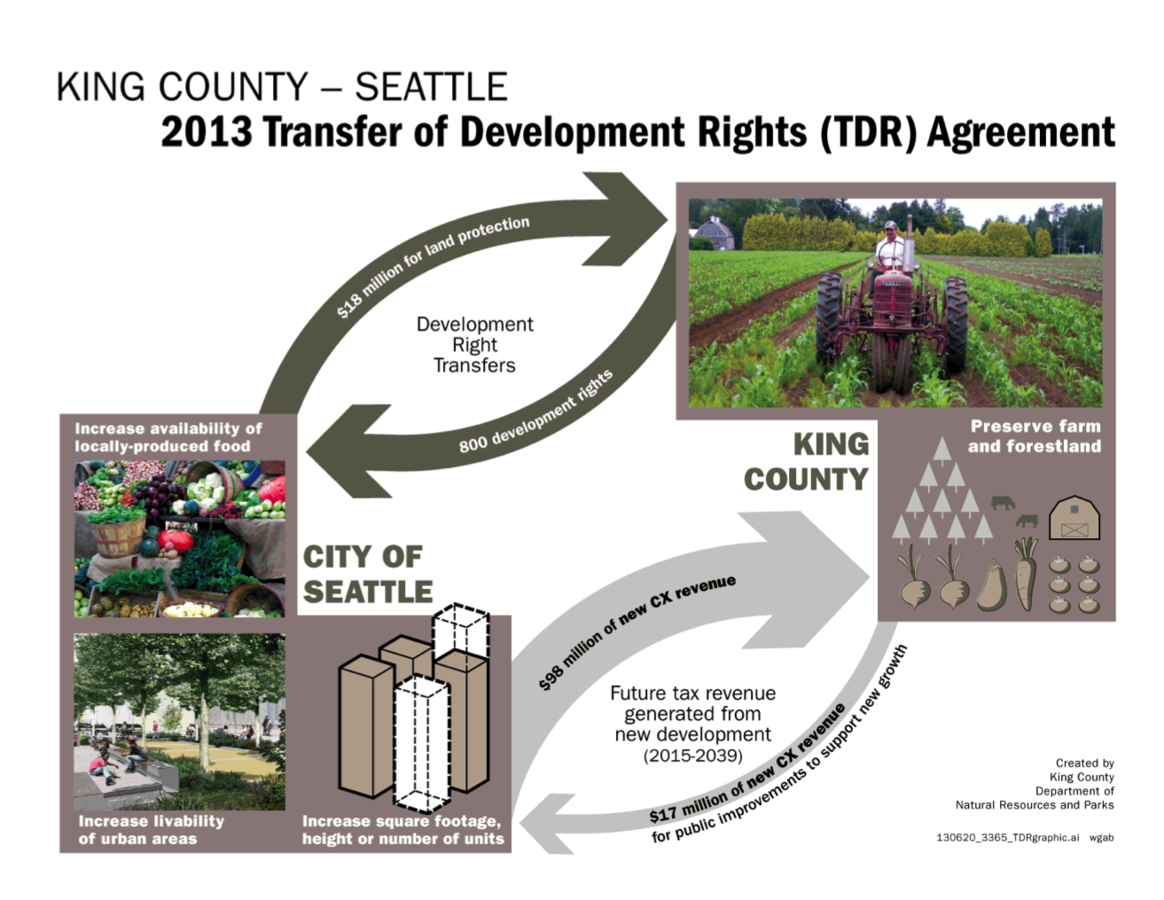
Source: http://www.kingcounty.gov/elected/executive/constantine/News/release/2013/July/8TDR.aspx
Regulatory Tools Cont.
Rate of Growth Ordinances (ROGO)
- Phased development approach that caps number of development permits in a given time period, usually year
- Delays development until public infrastructure provision is ready and able to support growth
- Monroe County, FL has ROGO

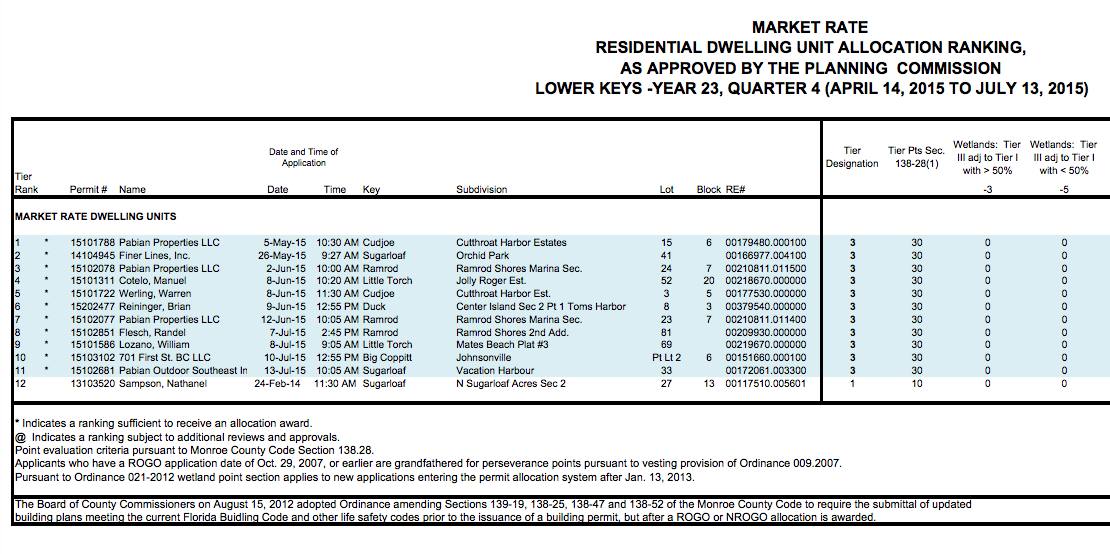
Around 200 units per year approved in Monroe County.
Nonregulatory Tools
Complementary strategies that move growth management beyond legal and political limits posed by regulation
- Acquisition of land (fee simple acquisition) or development rights or conservation easements
- Provision of urban services and infrastructure
- Development impact fees: fees charged to developers for specific impacts by projects, such as transportation
- Variable tax policies to incentivize or deincentivize
Takeaways:
Integration of Tools
-
The most effective programs use a combination of tools and work across jurisdictional boundaries
-
The foundation of any local program is a comprehensive plan that is based on sound information and meaningful public participation
Growth Management
in Florida
October 29th, 2015
A Little History
- Governor Reuben Askew appointed Task Force on Land Use in 1971 following prolonged drought cycle
- State Comprehensive Planning Act 1972
- Local Government Comprehensive Planning Act 1973
- Requires preparation and update of local comp plan
- Provided for state review and comment on plan
- All development must conform to comp plan
Regional Planning Systems
-
Regional Planning Councils
-
Quasi-governmental organizations authorized by state statute to address problems and plan solutions for issue of greater than local scope
-
Provide technical assistance to local governments on issues related to growth management
-
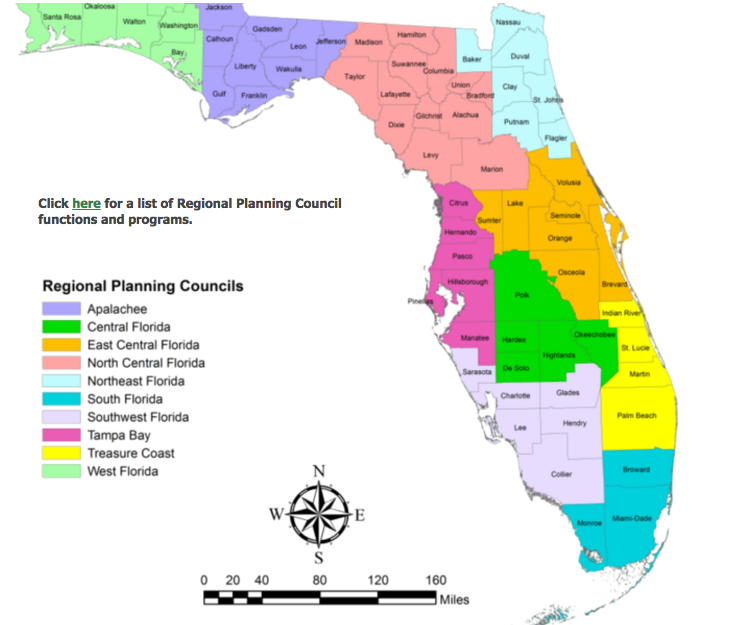
Regional Planning Systems
-
Water Management Districts
-
District works with state and federal agencies and local governments to achieve its mission through four primary functions, pursuant to Chapter 373, Florida Statutes.
-
Natural System Protection - ecosystem maintenance and restoration
-
Flood Protection - maintaining floodplains
-
Water Quality - storm management, springs restoration, conservation acquisition
-
Water Supply - water use permitting
-
-

Developments of Regional Impact (DRI)
-
Process to identify and mitigate regional impact of large scale developments
-
Pursuant to Section 380.06(1), Florida Statutes, a development of regional impact is "any development which, because of its character, magnitude, or location, would have a substantial effect upon the health, safety or welfare of citizens of more than one county."
-
Rolled back in 2015 Legislative session after 40+ years
Areas of Critical State Concern
-
State reviews all proposed development actions in these areas:
-
Green Swamp
-
Big Cypress
-
Florida Keys
-
Key West
-
City of Apalachicola
-
-
Also responsible for reviewing and approving amendments to comprehensive plans and land development regulations proposed and adopted by local governments within the designated areas
Statewide Comprehensive Planning
-
Local governments create Comprehensive Plans that must include:
-
Goals, Objectives, and Policies
-
A map showing future land use (FLUM)
-
Plan monitoring and evaluation procedures
-
-
Set of required Elements, many other optional. Tallahassee/Leon County has 11 Elements
White paper on 2011 changes: http://static.gunster.com/wp-content/uploads/Growth-Management-White-Paper-20111.pdf
Goals, Objectives, and Policies
Goals - Broad visions for the community's present and future
- i.e. "To improve water quality in the City of Tallahassee"
Objectives - Measurable, time-specific, and plainly written statements that provide guidance for the community.
- i.e. "In 5 years time, the City of Tallahassee shall reduce water pollution from non-point source canine fecal matter by 50%"
Policies - Strategies for achieving the objectives and ultimately the goals
- i.e. "Public education will be conducted via multi-media to engage public to pick up canine fecal matter"
Consistency
- Mandates coordination, compliance, and continuity among state, regional, and local plans
- Ultimate responsibility for review left to state office
Concurrency
- Infrastructure and service facilities must be provided at time of development (concurrent with)
- Mechanism for control of development volume and pace
- Must include public facilities needed to support development's minimum level-of-service (LOS) standards, which are required to accommodate growth
- Prohibits approval of development if in violation of LOS
- Major categories: Roads, sewers, solid waste, drainage, potable water, parks and recreation

Capital Improvements Plan
- A multiple year schedule of prioritized public infrastructure improvements
- Rolling 5-6 year plan updated annually
- Outlines revenues and expenditures for approved capital projects over the plan's time horizon
- Both a budgetary document and de facto planning document as it influences location of urban development
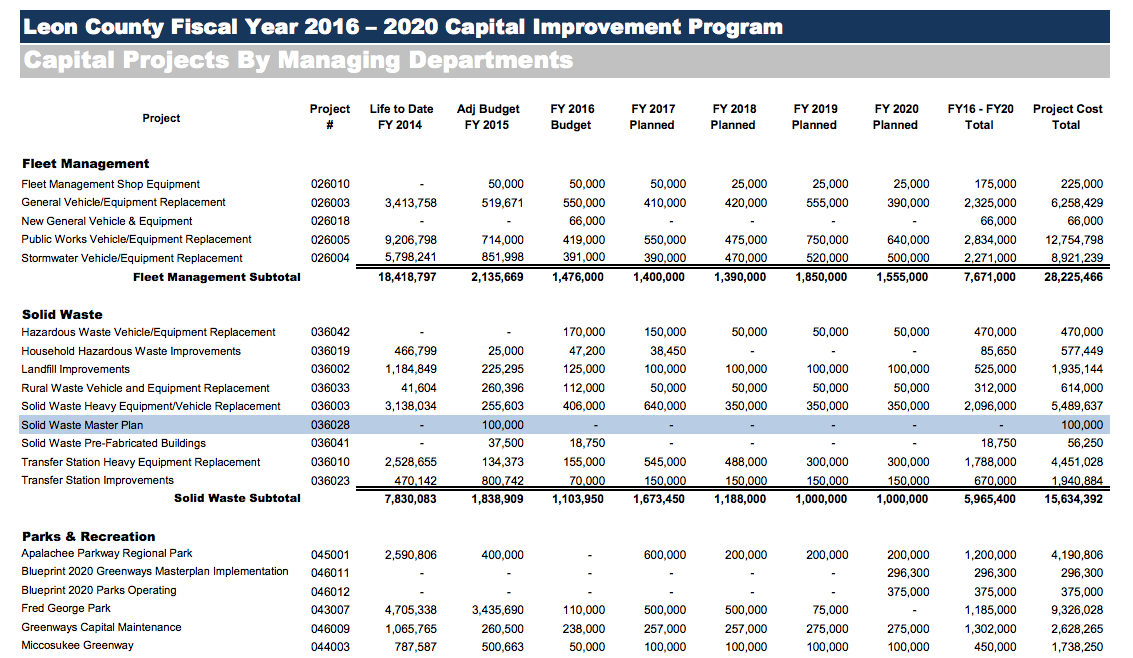
Source: https://cms.leoncountyfl.gov/portals/0/OMB/Docs/Budgets/FY2016Budget.pdf
URP 4423 Midterm
Due Tuesday, Nov 3rd by 11:59pm
Midterm Guidelines
-
Answer 2 of 3 questions provided
-
Limit each response to 5 pages maximum. Each response likely to be 2 to 3 pages, excluding graphics
-
Work individually
-
Cite your sources and provide reference page
-
Let's dive in!